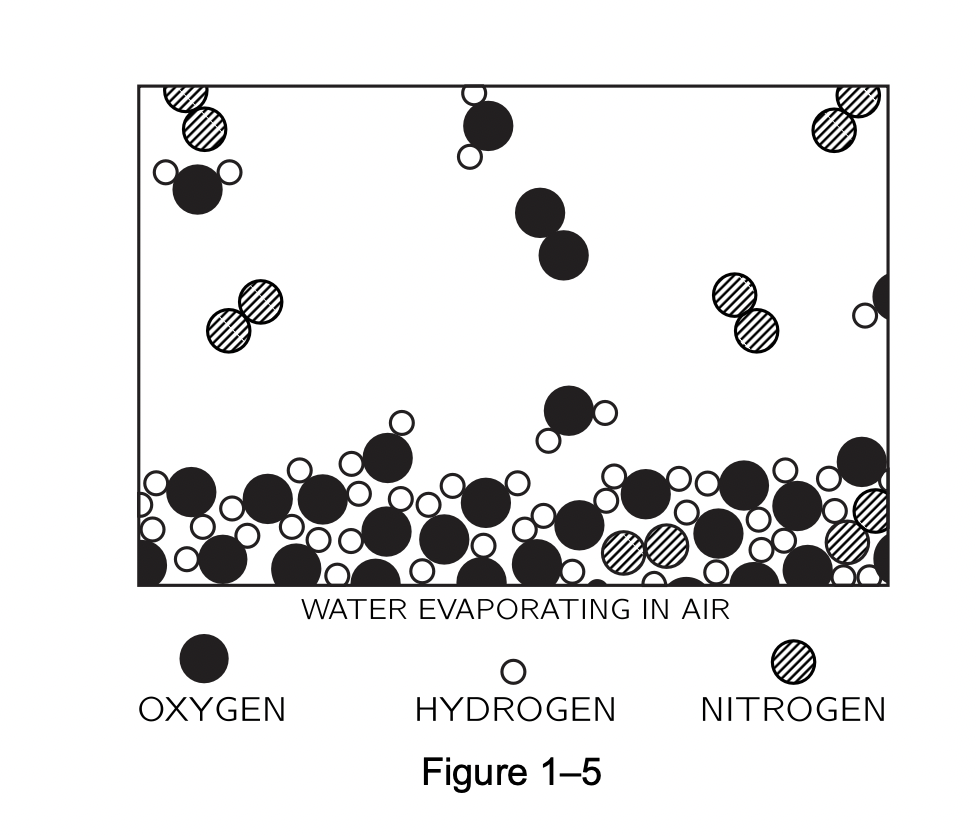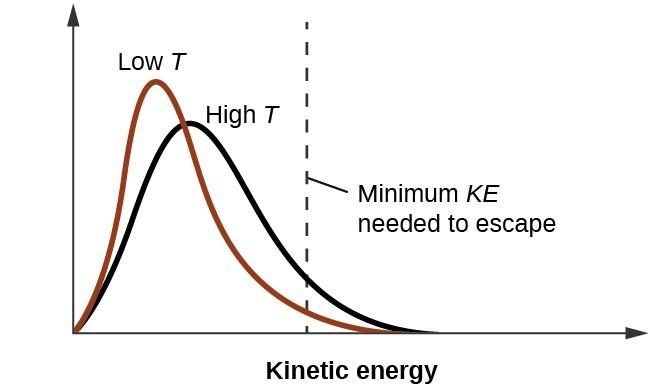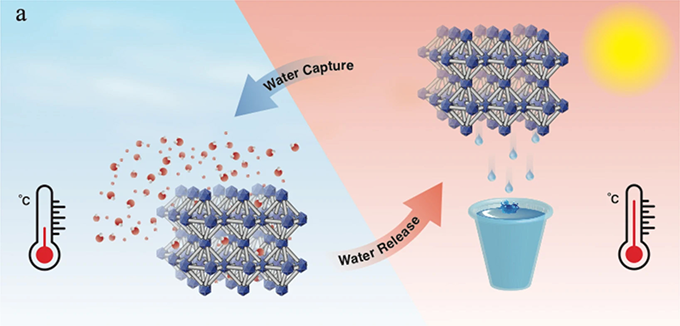WATER, WATER, EVERYWHERE,
NOR ANY DROP TO DRINK.
 The Rime of the Ancient Mariner (text of 1834)
By Samuel Taylor Coleridge
https://www.poetryfoundation.org/poems/43997/the-rime-of-the-ancient-mariner-text-of-1834
All in a hot and copper sky,
The bloody Sun, at noon,
Right up above the mast did stand,
No bigger than the Moon.
Day after day, day after day,
We stuck, nor breath nor motion;
As idle as a painted ship
Upon a painted ocean.
Water, water, every where,
And all the boards did shrink;
Water, water, every where,
Nor any drop to drink.
The Rime of the Ancient Mariner (text of 1834)
By Samuel Taylor Coleridge
https://www.poetryfoundation.org/poems/43997/the-rime-of-the-ancient-mariner-text-of-1834
All in a hot and copper sky,
The bloody Sun, at noon,
Right up above the mast did stand,
No bigger than the Moon.
Day after day, day after day,
We stuck, nor breath nor motion;
As idle as a painted ship
Upon a painted ocean.
Water, water, every where,
And all the boards did shrink;
Water, water, every where,
Nor any drop to drink.
FEYNMAN LECTURES ON PHYSICS
https://www.feynmanlectures.caltech.edu
Feynman Lecture No. 1 - Atoms in Motion
https://www.feynmanlectures.caltech.edu/I_01.html

 Attractive intermolecular forces are categorized into the
following types:
o Hydrogen bonding
o Ion-dipole forces and ion-induced dipole forces
o Van der Waals forces - Keesom force, Debye force, and
London dispersion force
Attractive intermolecular forces are categorized into the
following types:
o Hydrogen bonding
o Ion-dipole forces and ion-induced dipole forces
o Van der Waals forces - Keesom force, Debye force, and
London dispersion force
THE CHANGING CLIMATE AND FRESH WATER
Climate change is altering weather and water patterns across
the world, leading to shortages and droughts in some areas,
while others experience floods. In the sub-tropics where
certain regions are already dry, climate change will likely
cause droughts to be more frequent, which in turn leads to
less water thus impacting livelihoods through agriculture,
energy generation and more. At the other end of the
spectrum, global warming could also increase flooding in
other areas - a warmer atmosphere has the ability to hold
more moisture, causing heavier rainfall when the air
eventually cools and posing a huge risk to people around the
world.
Freshwater supply and scarcity
Of all of the water on Earth, 97% is saltwater, leaving a
mere 3% as freshwater, approximately 1% of which is readily
available for our use. The world's population is becoming
more and more reliant on this precious resource for power,
agriculture, industrial practices, and daily consumption.
Scarcity of fresh water is likely to worsen as climate
change leads to more droughts and floods.
FRESH WATER FROM THIN AIR (DEC.14, 2023)
https://www.nature.com/articles/d41586-023-03875-w?
Strategies for collecting water from the atmosphere using
minimal energy could fill a crucial gap in sustaining
communities that have limited access to water.
WATER HARVESTING FROM AIR: CURRENT PASSIVE APPROACHES AND
OUTLOOK (APR.21, 2022)
https://pubs.acs.org/doi/10.1021/acsmaterialslett.1c00850
ABSTRACT
In the context of global water scarcity, water vapor
available in air is a non-negligible supplementary fresh
water resource. Current and potential energetically passive
procedures for improving atmospheric water harvesting (AWH)
capabilities involve different strategies and dedicated
materials, which are reviewed in this paper, from the
perspective of morphology and wettability optimization,
substrate cooling, and sorbent assistance. The advantages
and limitations of different AWH strategies are respectively
discussed, as well as their water harvesting performance.
The various applications based on advanced AWH technologies
are also demonstrated. A prospective concept of
multifunctional water vapor harvesting panel based on
promising cooling material, inspired by silicon-based solar
energy panels, is finally proposed with a brief outlook of
its advantages and challenges.
REVERSIBLE ATMOSPHERIC WATER HARVESTING USING METAL-ORGANIC
FRAMEWORKS (8+ L/kg-MOF/day)
https://www.nature.com/articles/s41598-020-58405-9
 ABSTRACT
The passive capture of clean water from humid air without
reliance on bulky equipment and high energy has been a
substantial challenge and has attracted significant interest
as a potential environmentally friendly alternative to
traditional water harvesting methods. Metal-organic
frameworks (MOFs) offer a high potential for this
application due to their structural versatility which
permits scalable, facile modulations of structural and
functional elements. Although MOFs are promising materials
for water harvesting, little research has been done to
address the microstructure-adsorbing characteristics
relationship with respect to the dynamic
adsorption-desorption process.
In this article, we present a parametric study of nine
hydrolytically stable MOFs with diverse structures for
unraveling fundamental material properties that govern the
kinetics of water sequestration in this class of materials
as well as investigating overall uptake capacity
gravimetrically. The effects of temperature, relative
humidity, and powder bed thickness on the
adsorption-desorption process are explored for achieving
optimal operational parameters. We found that Zr-MOF-808 can
produce up to 8.66 L/kg-MOF/day, an extraordinary finding
that outperforms any previously reported values for
MOF-based systems. The presented findings help to deepen our
understanding and guide the discovery of next-generation
water harvesting materials.
ABSTRACT
The passive capture of clean water from humid air without
reliance on bulky equipment and high energy has been a
substantial challenge and has attracted significant interest
as a potential environmentally friendly alternative to
traditional water harvesting methods. Metal-organic
frameworks (MOFs) offer a high potential for this
application due to their structural versatility which
permits scalable, facile modulations of structural and
functional elements. Although MOFs are promising materials
for water harvesting, little research has been done to
address the microstructure-adsorbing characteristics
relationship with respect to the dynamic
adsorption-desorption process.
In this article, we present a parametric study of nine
hydrolytically stable MOFs with diverse structures for
unraveling fundamental material properties that govern the
kinetics of water sequestration in this class of materials
as well as investigating overall uptake capacity
gravimetrically. The effects of temperature, relative
humidity, and powder bed thickness on the
adsorption-desorption process are explored for achieving
optimal operational parameters. We found that Zr-MOF-808 can
produce up to 8.66 L/kg-MOF/day, an extraordinary finding
that outperforms any previously reported values for
MOF-based systems. The presented findings help to deepen our
understanding and guide the discovery of next-generation
water harvesting materials.
HARVESTING DRINKING WATER FROM HUMIDITY AROUND THE CLOCK (50 mL/m^2/hr)
https://www.science.org/doi/10.1126/sciadv.abf3978
 ABSTRACT
Atmospheric water vapor is ubiquitous and represents a
promising alternative to address global clean water
scarcity. Sustainably harvesting this resource requires
energy neutrality, continuous production, and facility of
use. However, fully passive and uninterrupted 24-hour
atmospheric water harvesting remains a challenge. Here, we
demonstrate a rationally designed system that
synergistically combines radiative shielding and
cooling-dissipating the latent heat of condensation
radiatively to outer space-with a fully passive
superhydrophobic condensate harvester, working with a
coalescence-induced water removal mechanism. A rationally
designed shield, accounting for the atmospheric radiative
heat, facilitates daytime atmospheric water harvesting under
solar irradiation at realistic levels of relative humidity.
The remarkable cooling power enhancement enables dew mass
fluxes up to 50 mL/m^2/hr, close to the ultimate
capabilities of such systems. Our results demonstrate that
the yield of related technologies can be at least doubled,
while cooling and collection remain passive, thereby
substantially advancing the state of the art.
ABSTRACT
Atmospheric water vapor is ubiquitous and represents a
promising alternative to address global clean water
scarcity. Sustainably harvesting this resource requires
energy neutrality, continuous production, and facility of
use. However, fully passive and uninterrupted 24-hour
atmospheric water harvesting remains a challenge. Here, we
demonstrate a rationally designed system that
synergistically combines radiative shielding and
cooling-dissipating the latent heat of condensation
radiatively to outer space-with a fully passive
superhydrophobic condensate harvester, working with a
coalescence-induced water removal mechanism. A rationally
designed shield, accounting for the atmospheric radiative
heat, facilitates daytime atmospheric water harvesting under
solar irradiation at realistic levels of relative humidity.
The remarkable cooling power enhancement enables dew mass
fluxes up to 50 mL/m^2/hr, close to the ultimate
capabilities of such systems. Our results demonstrate that
the yield of related technologies can be at least doubled,
while cooling and collection remain passive, thereby
substantially advancing the state of the art.
WARKA WATER TOWERS HARVEST DRINKABLE WATER FROM THE AIR (2+ min)
https://www.youtube.com/watch?v=THJVuinPbc0
The tower consists of a bamboo frame supporting a mesh
polyester material inside. Rain, fog and dew condenses
against the mesh and trickles down a funnel into a reservoir
at the base of the structure. A fabric canopy shades the
lower sections of the tower to prevent the collected water
from evaporating.
"Warka Water is currently represented by a tower that
reaches up to the sky to collect moisture from the air and
brings it down by gravity to the people," Vittori says.
The performance of the towers varies depending on the
weather, but Vittori's aim is to create a structure that
would enable the community to extract up to 100 litres of
water a day without the reservoir running dry.
CREATING WATER IN THE ATACAMA DESERT -
CREATING WATER FOUNDATION - DOCUMENTARY (9+ min)
https://www.youtube.com/watch?v=xsNNp9N2v9Y
Capturing water from the fog and producing food on the
driest place on earth, the Atacama Desert, Peru.
This water has two purposes: clean drinking water and to
grow food.
Water from the fog - Clean drinking water - organic
agriculture - Biochar - clean energy.
HYDROPHILIC NANOFIBERS IN FOG COLLECTORS FOR INCREASED WATER
HARVESTING EFFICIENCY (64 mL/cm^2/hr)
https://pubs.rsc.org/en/content/articlelanding/2020/ra/d0ra03939j#!
ABSTRACT
The water crisis is a big social problem and one of the
solutions are the Fog Water Collectors (FWCs) that are
placed in areas, where the use of conventional methods to
collect water is impossible or inadequate. The most common
fog collecting medium in FWC is Raschel mesh, which in our
study is modified with electrospun polyamide 6 (PA6)
nanofibers. The hydrophilic PA6 nanofibers were directly
deposited on Raschel meshes to create the hierarchical
structure that increases the effective surface area which
enhances the ability to catch water droplets from fog. The
meshes and the wetting behavior were investigated using a
scanning electron microscope (SEM) and environmental SEM
(ESEM). We performed the fog water collection experiments on
various configurations of Raschel meshes with hydrophilic
PA6 nanofibers. The addition of hydrophilic nanofibers
allowed us to obtain 3 times higher water collection rate of
collecting water from fog. Within this study, we show the
innovative and straightforward way to modify the existing
technology that improves water collection by changing the
mechanisms of droplet formation on the mesh.
SOLAR-POWERED SYSTEM EXTRACTS DRINKABLE WATER FROM "DRY" AIR
MIT ENGINEERS HAVE MADE THEIR INITIAL DESIGN MORE PRACTICAL,
EFFICIENT, AND SCALABLE. (~1 L/m^2/day)
https://news.mit.edu/2020/solar-extracts-drinkable-water-1014
https://www.youtube.com/watch?v=hoXj-j0VSTA&t=3s (1 min)
https://www.cell.com/joule/fulltext/S2542-4351(20)30444-X
Instead of the MOFs, the new design uses an adsorbent
material called a zeolite, which in this case is composed of
a microporous iron aluminophosphate. The material is widely
available, stable, and has the right adsorbent properties to
provide an efficient water production system based just on
typical day-night temperature fluctuations and heating with
sunlight.
The two-stage design developed by LaPotin makes clever use
of the heat that is generated whenever water changes phase.
The sun's heat is collected by a solar absorber plate at the
top of the box-like system and warms the zeolite, releasing
the moisture the material has captured overnight. That vapor
condenses on a collector plate - a process that releases
heat as well. The collector plate is a copper sheet directly
above and in contact with the second zeolite layer, where
the heat of condensation is used to release the vapor from
that subsequent layer. Droplets of water collected from each
of the two layers can be funneled together into a collecting
tank.
AN ACCIDENTALLY DISCOVERED CLASS OF NANOSTRUCTURED MATERIALS
CAN PASSIVELY HARVEST WATER FROM AIR
https://phys.org/news/2025-05-accidentally-class-nanostructured-materials-passively.html
https://www.science.org/doi/10.1126/sciadv.adu8349
OFF-GRID WATER WITH AIR AND SUNLIGHT (14+ min)
https://www.youtube.com/watch?v=KlUQ1pneow8
I make my own water using solar energy. This is my review of
SOURCE Hydropanels from Zero Mass Water. I spent my own
money on these. This is not a sponsored video nor do I get
any commission if you buy them. Let me know in the comments
if you want more content on these and thanks for watching!
How our drinking water could come from thin air
https://www.bbc.com/future/article/20240205-drinking-water-the-solar-panels-and-self-filling-coffee-machine-that-pull-moisture-out-of-the-air
https://www.science.org/doi/10.1126/sciadv.adu8349
sam.wormley@icloud.com
The Rime of the Ancient Mariner (text of 1834) By Samuel Taylor Coleridge https://www.poetryfoundation.org/poems/43997/the-rime-of-the-ancient-mariner-text-of-1834 All in a hot and copper sky, The bloody Sun, at noon, Right up above the mast did stand, No bigger than the Moon. Day after day, day after day, We stuck, nor breath nor motion; As idle as a painted ship Upon a painted ocean. Water, water, every where, And all the boards did shrink; Water, water, every where, Nor any drop to drink.

Attractive intermolecular forces are categorized into the following types: o Hydrogen bonding o Ion-dipole forces and ion-induced dipole forces o Van der Waals forces - Keesom force, Debye force, and London dispersion force
ABSTRACT The passive capture of clean water from humid air without reliance on bulky equipment and high energy has been a substantial challenge and has attracted significant interest as a potential environmentally friendly alternative to traditional water harvesting methods. Metal-organic frameworks (MOFs) offer a high potential for this application due to their structural versatility which permits scalable, facile modulations of structural and functional elements. Although MOFs are promising materials for water harvesting, little research has been done to address the microstructure-adsorbing characteristics relationship with respect to the dynamic adsorption-desorption process. In this article, we present a parametric study of nine hydrolytically stable MOFs with diverse structures for unraveling fundamental material properties that govern the kinetics of water sequestration in this class of materials as well as investigating overall uptake capacity gravimetrically. The effects of temperature, relative humidity, and powder bed thickness on the adsorption-desorption process are explored for achieving optimal operational parameters. We found that Zr-MOF-808 can produce up to 8.66 L/kg-MOF/day, an extraordinary finding that outperforms any previously reported values for MOF-based systems. The presented findings help to deepen our understanding and guide the discovery of next-generation water harvesting materials.
ABSTRACT Atmospheric water vapor is ubiquitous and represents a promising alternative to address global clean water scarcity. Sustainably harvesting this resource requires energy neutrality, continuous production, and facility of use. However, fully passive and uninterrupted 24-hour atmospheric water harvesting remains a challenge. Here, we demonstrate a rationally designed system that synergistically combines radiative shielding and cooling-dissipating the latent heat of condensation radiatively to outer space-with a fully passive superhydrophobic condensate harvester, working with a coalescence-induced water removal mechanism. A rationally designed shield, accounting for the atmospheric radiative heat, facilitates daytime atmospheric water harvesting under solar irradiation at realistic levels of relative humidity. The remarkable cooling power enhancement enables dew mass fluxes up to 50 mL/m^2/hr, close to the ultimate capabilities of such systems. Our results demonstrate that the yield of related technologies can be at least doubled, while cooling and collection remain passive, thereby substantially advancing the state of the art.